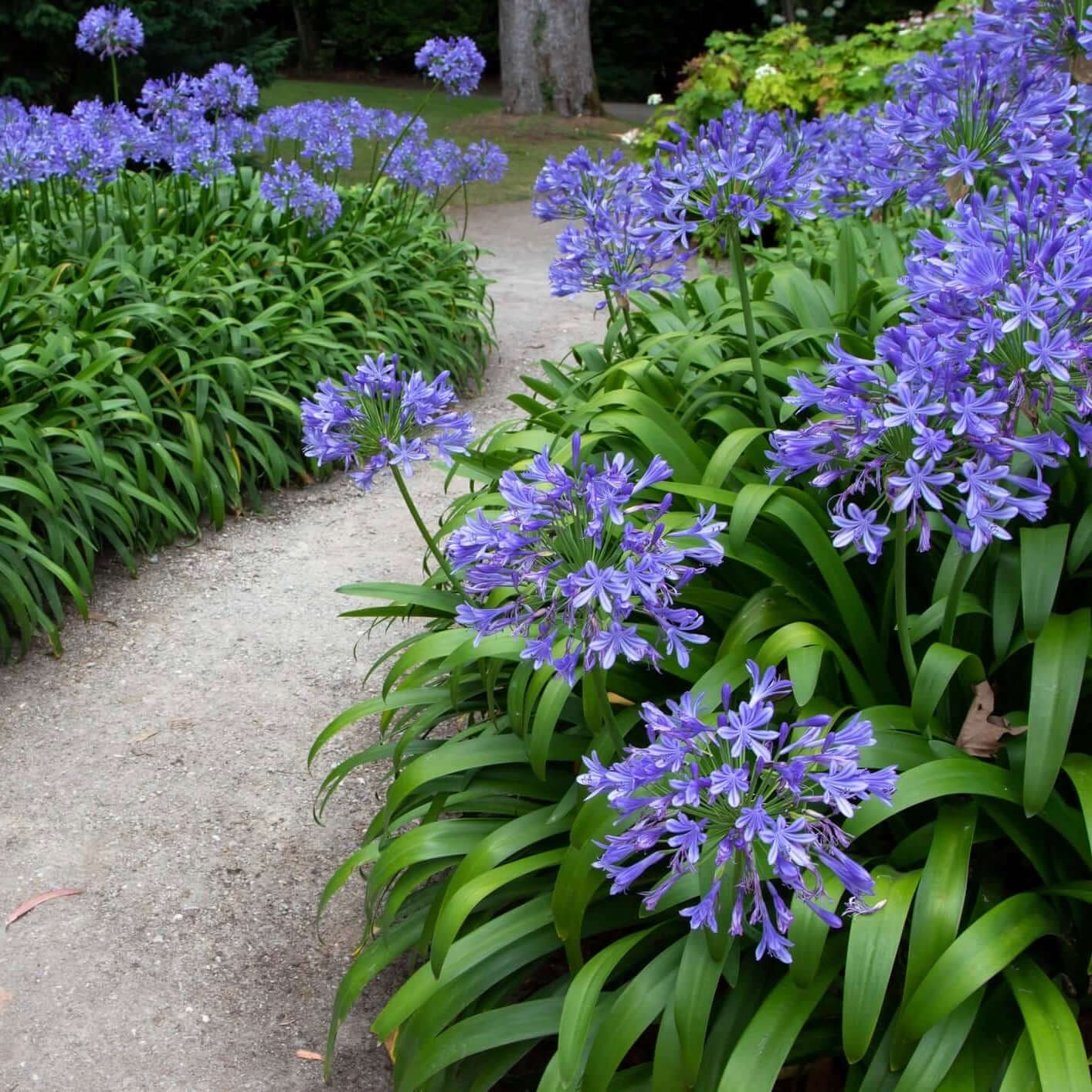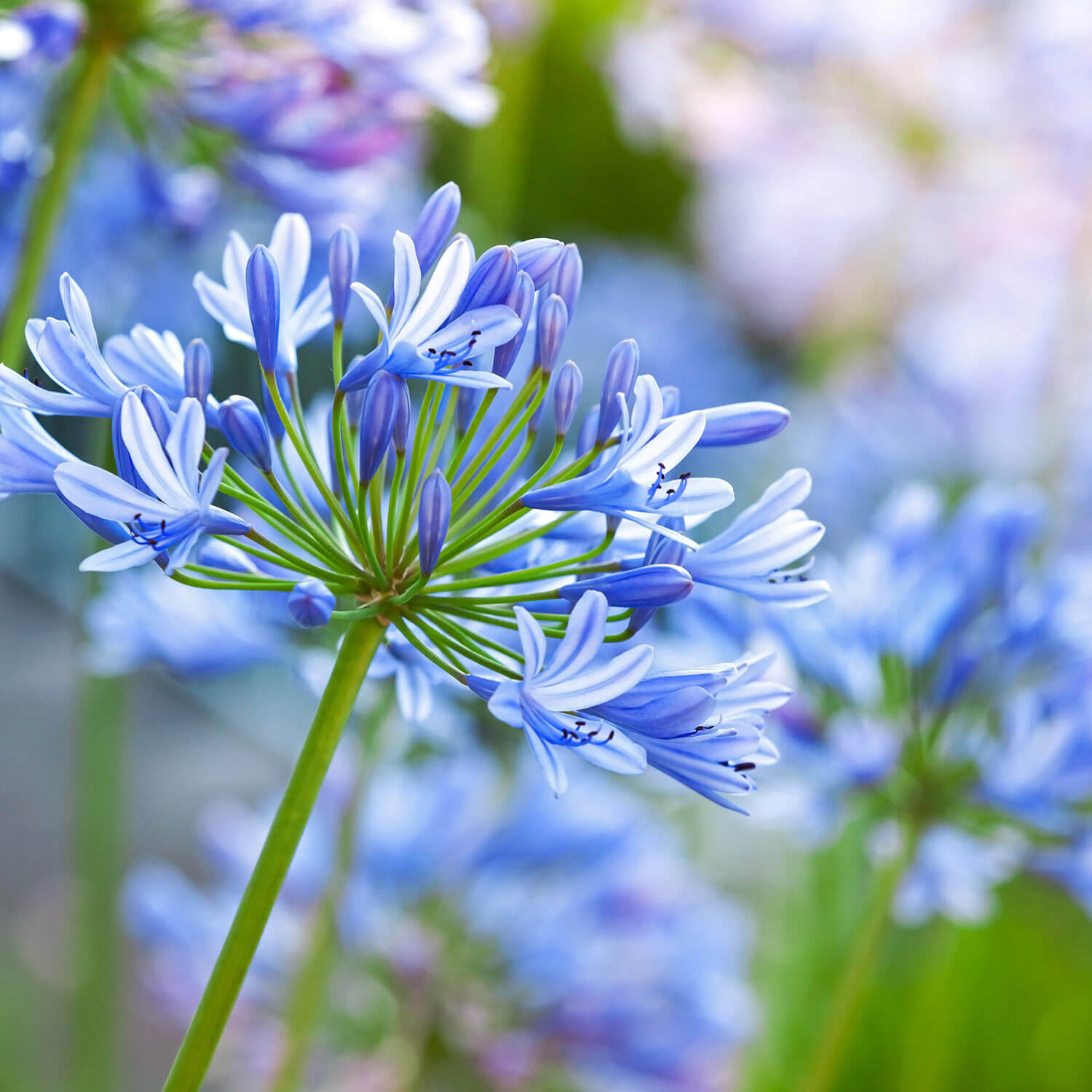Common Agapanthus Troubles and Exactly How to Resolve Them
Wiki Article
Letting Loose the Secret to Successful Agapanthus Farming: Tips and Tricks for a Flourishing Garden
In the world of gardening, cultivating agapanthus efficiently requires a strategic strategy that encompasses numerous facets of plant treatment. With careful focus to detail, one can open the secrets to nurturing these magnificent flowers, leading to a yard that grows with appeal and vibrancy. By recognizing the nuances of agapanthus growing, one can develop an atmosphere where these plants grow and bloom perfectly. In the following conversation, we will certainly explore necessary tips and techniques that will certainly direct you towards a growing agapanthus garden, supplying understandings into ideal practices, soil problems, sprinkling techniques, and a lot more.Growing Agapanthus: Finest Practices
When planting Agapanthus, proper soil preparation is essential for ensuring effective growth and development of these stunning flowers. Agapanthus, commonly called Lily of the Nile or African lily, grows in well-draining dirt with a somewhat acidic to neutral pH level - Agapanthus. Prior to planting, it is crucial to change hefty clay dirts with raw material such as garden compost or peat moss to improve drain and give important nutrients for the plantsTo plant Agapanthus, pick a place that obtains complete sunlight to partial shade, as this will advertise healthy growth and plentiful blooming. Dig an opening twice the size of the plant's root ball and place the Agapanthus at the exact same depth it was previously growing. Carefully backfill the hole with dirt, pressing down firmly to get rid of any air pockets around the origins.
Water the newly planted Agapanthus completely and proceed to maintain the soil evenly moist, specifically during the plant's active expanding season. Agapanthus. Using a balanced plant food once a month can even more sustain the plant's development and blooming. By following these finest methods for growing Agapanthus, you can produce a magnificent display of these exciting flowers in your garden
Perfect Dirt Issues for Agapanthus
For optimal growth and growing success of Agapanthus plants, making sure the dirt conditions are perfect is crucial. Agapanthus likes soil that is abundant in nutrients, so including a well balanced fertilizer during the growing period can promote healthy and balanced growth and vivid blooms.
Watering and Fertilizing Tips
To make sure healthy growth and dynamic blooms, proper watering and feeding strategies are crucial for effective Agapanthus farming. Agapanthus plants benefit from routine watering, especially throughout the expanding period.When it comes to fertilizing Agapanthus, a balanced fertilizer with equivalent components nitrogen, phosphorus, and potassium can be applied in the spring to advertise healthy and balanced growth and flowering. Slow-release fertilizers are ideal for giving nutrients progressively over a prolonged period. Avoid over-fertilizing, as this can bring about extreme foliage development at the cost of blooms.
Additionally, including raw material like garden compost into the soil can boost nutrient levels and boost dirt structure, assisting in the general health of the Agapanthus plants. By adhering to these useful site watering and fertilizing tips, garden enthusiasts can ensure their Agapanthus plants grow and create spectacular display screens of flowers.
Trimming and Deadheading Methods
Proper trimming and deadheading techniques play a critical function in maintaining the health and wellness and aesthetic appeals of Agapanthus plants, complementing the necessary practices of watering and feeding for successful farming. Pruning Agapanthus entails removing spent blossom heads, yellowing or dead fallen leaves, and overall shaping of the plant to advertise better growth. Deadheading, the procedure of removing discolored blossoms, not only boosts the plant's appearance yet additionally encourages further flowering.When deadheading Agapanthus, it is suggested to clip off the blossom stem at the base making use of sharp, clean shears. This procedure reroutes the plant's energy from seed manufacturing back right into root and foliage development, advertising a healthier and much more durable plant. Normal deadheading can extend the flowering duration of Agapanthus and stop self-seeding, which can lead to overcrowding.
In regards to pruning, Agapanthus normally take advantage of a light trim after flowering to clean up the plant and urge fresh growth. Cutting back the spent blossom stems and getting rid of any damaged or dead vegetation aids maintain the plant's vigor and hop over to these guys overall appearance. Nevertheless, it is vital to avoid cutting right into the crown of the plant, as this can damage its wellness.

Protecting Agapanthus From Pests and Diseases
Applying efficient insect and disease monitoring approaches is vital to protecting the health and vigor of Agapanthus plants in growing. One common parasite that influences Agapanthus is the Agapanthus borer, a caterpillar that tunnels right into the plant, triggering damage to the flowers and fallen leaves.In addition to pests, Agapanthus are at risk to illness such as root rot and fungal fallen leave spots. These concerns can commonly be avoided by ensuring appropriate drainage and staying clear of overwatering. Affected components of the plant need to be quickly gotten rid of to avoid more spread if indications of condition appear. Fungicides might also be utilized as a therapy step, adhering to the producer's guidelines thoroughly. By remaining attentive and attending to parasite and condition issues immediately, garden enthusiasts can help their Agapanthus grow and grow.

Final Thought
To conclude, effective farming of agapanthus calls for correct planting techniques, perfect soil conditions, sufficient watering and fertilizing, routine pruning and deadheading, and security from bugs and illness. By complying with these techniques and ideas, gardeners can guarantee a growing garden filled with gorgeous agapanthus blooms. Agapanthus. Bear in mind to keep regular treatment and interest to detail to promote the health and long life of these magnificent plantsWhen growing Agapanthus, appropriate soil preparation is essential for ensuring effective development and advancement of these gorgeous flowers.Water the freshly grown Agapanthus completely and continue to maintain the dirt evenly moist, specifically throughout the plant's active expanding period.For optimal development and growing success of Agapanthus plants, making sure the soil problems official website are suitable is important. When hair transplanting or planting Agapanthus, make certain the dirt is well-prepared to offer the essential structure for the plants to establish themselves efficiently. One typical pest that influences Agapanthus is the Agapanthus borer, a caterpillar that tunnels right into the plant, triggering damage to the fallen leaves and flowers.
Report this wiki page